top of page


WAVES - Wind and Aquaculture Support Vessel: Emissionless Sailing with Autonomous
Integration
This project aims to design and plan for the construction of a zero-emission Offshore Service Vessel, that has the versatility to perform services over multiple sectors of the ORE & aquaculture industries, (e.g., maintenance, research surveys, installation,decommissioning, crew transfer etc.). The project will take an established CTV Catamaran hull and optimise into a vessel that can integrate
zero-emission fuels and technologies and meet the diverse requirements of the above work scopes. The vessel will be approximately 35m in length and be able to
cover the operations currently done by CTVs, SOVs, Research Vessels, and others. This vessel will be commercially very viable with the versatility and small size, meaning that the vessel can perform more types of jobs (more operational
days) at reduced costs (due to lesser crew requirements, operational costs, port costs).
zero-emission fuels and technologies and meet the diverse requirements of the above work scopes. The vessel will be approximately 35m in length and be able to
cover the operations currently done by CTVs, SOVs, Research Vessels, and others. This vessel will be commercially very viable with the versatility and small size, meaning that the vessel can perform more types of jobs (more operational
days) at reduced costs (due to lesser crew requirements, operational costs, port costs).

RESHIP - Redefine energy Efficiency solutions for hydrogen powered SHIPs in marine and inland waterway
Under the framework of Zero Emission Waterborne Transport (ZEWT), hydrogen as the future fuel for ships offers an opportunity to
zero the GHG emission. Nevertheless, the challenges for onboard hydrogen storage and utilisation obstruct this long desired
revolution. Novel and effective technology solution is urgently needed.
The project, RESHIP, aims to redefine the onboard energy saving solutions for newbuilds and retrofits in marine and inland waterway
with disruptive technologies in two distinct areas, Energy Saving Devices (ESDs) and onboard hydrogen utilisation. Regarding the
ESDs, the project proposes to research and develop hydrogen compatible ESD solutions in standalone/combined applications,
centered around Tubercle Assisted Propulsors (TAPs), to improve the vessel's propulsive energy efficiency and to optimise towards
hydrogen power and drive system. With the novel and energy efficient hydrogen carrier technology HydroSil, RESHIP links the ESD
technology to the research of the energy efficient onboard hydrogen utilisation technology to systematically reshape the hydrogen
driven ships with a holistic energy saving solution. Together, RESHIP aims to achieve a minimum overall 35% energy saving and to
half the hydrogen storage demands on space and/or weight, comparing to the state-of-the-art hydrogen powered vessels.
The proposal responds to the Horizon Europe Research and Innovation Action call on the topic “Innovative on-board energy saving
solutions” (ID: HORIZON-CL5-2021-D5-01-10). The consortium gathers world-leading multidisciplinary experts and key patent holders
with 14 partners from 9 EU countries, forging a complementary stakeholder group. The consortium covers two industrial sectors,
shipping and ships together with hydrogen. The implementation of the developed technologies will be demonstrated and validated
in technical, environmental, cost economical, safety and regulatory levels, bringing TRL from 2-3 to 5-6.
zero the GHG emission. Nevertheless, the challenges for onboard hydrogen storage and utilisation obstruct this long desired
revolution. Novel and effective technology solution is urgently needed.
The project, RESHIP, aims to redefine the onboard energy saving solutions for newbuilds and retrofits in marine and inland waterway
with disruptive technologies in two distinct areas, Energy Saving Devices (ESDs) and onboard hydrogen utilisation. Regarding the
ESDs, the project proposes to research and develop hydrogen compatible ESD solutions in standalone/combined applications,
centered around Tubercle Assisted Propulsors (TAPs), to improve the vessel's propulsive energy efficiency and to optimise towards
hydrogen power and drive system. With the novel and energy efficient hydrogen carrier technology HydroSil, RESHIP links the ESD
technology to the research of the energy efficient onboard hydrogen utilisation technology to systematically reshape the hydrogen
driven ships with a holistic energy saving solution. Together, RESHIP aims to achieve a minimum overall 35% energy saving and to
half the hydrogen storage demands on space and/or weight, comparing to the state-of-the-art hydrogen powered vessels.
The proposal responds to the Horizon Europe Research and Innovation Action call on the topic “Innovative on-board energy saving
solutions” (ID: HORIZON-CL5-2021-D5-01-10). The consortium gathers world-leading multidisciplinary experts and key patent holders
with 14 partners from 9 EU countries, forging a complementary stakeholder group. The consortium covers two industrial sectors,
shipping and ships together with hydrogen. The implementation of the developed technologies will be demonstrated and validated
in technical, environmental, cost economical, safety and regulatory levels, bringing TRL from 2-3 to 5-6.
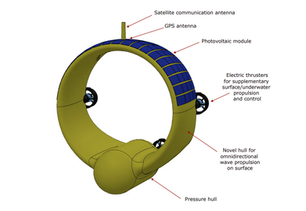
Demeter
Demeter uses energy-harvesting, intelligent, uncrewed vehicles to provide a persistent, infrastructure-independent subsea sensor data retrieval and analysis service. It is a compelling alternative to CAPEX-heavy fixed power and communication networks that would otherwise be required to support the widespread use of subsea sensors and systems for long-term monitoring of asset health, thus accelerating subsea digitalisation. Demeter will enable more cost-effective predictive maintenance of subsea assets, greatly reduce OPEX and downtime, and ultimately lower the cost and environmental impact of exploiting renewable and non-renewable offshore resources alike. Downstream, Demeter has further application in maritime security operations, including maritime surveillance.
Key innovations include: long-endurance, energy-harvesting, hybrid underwater and surface autonomous vehicles; an onboard edge-processing module based on a novel computer architecture, capable of performing intensive statistical analysis of harvested sensor data at a fraction of the power of current technologies; a technology stack for high-integrity long-term autonomous navigation and decision making; and embedded subsea sensors adapted for data retrieval by the autonomous vehicles. As an integrated solution, Demeter aims to shift the subsea monitoring paradigm from one of manual, expensive, and low-frequency data retrieval to that of automated, inexpensive, high frequency and on-demand intelligence retrieval. Suitably evolved, Demeter will open up entirely new concepts of operation for maritime security that are not currently feasible.
The project brings together a diverse set of partners to deliver a game-changing capability: Autonomous Devices, a specialist developer of robotic solutions for extreme and challenging environments; Signaloid, developers of a paradigm-shifting computer architecture for edge computing; D-RisQ, developers of a unique technology stack for the implementation of high integrity autonomous behaviours; CRP Subsea, developers of advanced subsea infrastructure monitoring and engineering products; autonomous mission planning experts from Royal Holloway University of London; autonomous navigation experts from the University of Manchester; and novel marine vehicle design, analysis and testing experts from the University of Strathclyde.
Key innovations include: long-endurance, energy-harvesting, hybrid underwater and surface autonomous vehicles; an onboard edge-processing module based on a novel computer architecture, capable of performing intensive statistical analysis of harvested sensor data at a fraction of the power of current technologies; a technology stack for high-integrity long-term autonomous navigation and decision making; and embedded subsea sensors adapted for data retrieval by the autonomous vehicles. As an integrated solution, Demeter aims to shift the subsea monitoring paradigm from one of manual, expensive, and low-frequency data retrieval to that of automated, inexpensive, high frequency and on-demand intelligence retrieval. Suitably evolved, Demeter will open up entirely new concepts of operation for maritime security that are not currently feasible.
The project brings together a diverse set of partners to deliver a game-changing capability: Autonomous Devices, a specialist developer of robotic solutions for extreme and challenging environments; Signaloid, developers of a paradigm-shifting computer architecture for edge computing; D-RisQ, developers of a unique technology stack for the implementation of high integrity autonomous behaviours; CRP Subsea, developers of advanced subsea infrastructure monitoring and engineering products; autonomous mission planning experts from Royal Holloway University of London; autonomous navigation experts from the University of Manchester; and novel marine vehicle design, analysis and testing experts from the University of Strathclyde.

Project ZERO - Zero Emission Research and Offshore Service Vessel
Project Zero, Zero Emission Research and Offshore Service Vessel, will demonstrate the technical and economic feasibility of achieving zero emission operations of offshore survey and research vessels (OSRVs) in the long-term, while remaining flexible to future alternative fuel developments. Project is funded under the CMDC2 with a total budget of £727k, aiming to deliver the design and complete the model testing of the 45m OSRV. Outside of its own green credentials, the vessel will support expansion of the rapidly accelerating offshore renewable energy industry. The research team in NAOME lead by Dr Weichao Shi will support the vessel’s design and optimization with the final model test planned in the Kelvin Hydrodynamics Lab.
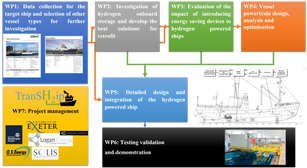
Transition to hydrogen powered ocean-going and short-sea shipping with enabling retrofit technologies (TransShip)
This project aims to research the technical and economic feasibility of hydrogen powered ocean-going and short-sea shipping vessels as a retrofit solution on existing vessels, which, combined with innovative energy saving devices, will contribute to the zero-emission, clean shipping future goal set out by the UK Government in the Maritime2050 route map plan. The project consortium brings together a strong workforce from both academia and industry with a passion and knowledge to develop the proposed technology by first reviewing the technical and economic feasibility of retrofittable hydrogen-powered propulsion. The project addresses a multitude of challenges to ensure the feasibility study covers all aspects of the proposed technology such as technical, economic, safety and legislative challenges that must be considered for a rigorous and diligent feasibility study.

Design and Optimisation of Noise Reduction Marine Ducted Thrusters
This project is to support BAE Systems by exploring the influence of leading-edge tubercle modifications on a marine ducted propeller's hydrodynamic and noise performance.
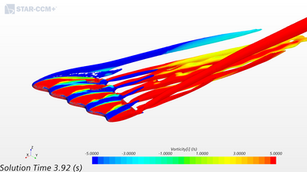
Control or Mitigation of the Turbulence Generated by Marine Control Surfaces
This project is to support BAE Systems to research a novel solution (retrofitting flow conditioning devices) or strategies (best practice) enable the control and/or mitigation of a marine control surface’s turbulence without compromising its functionality.
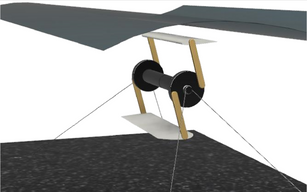
LiftWEC - Development of a novel wave energy converter based on hydrodynamic lift forces
This project is sponsored by EU-H2020 program to design a wave energy device called LiftWEC to exploit the lift forces generated using a rotating hydrofoil. This radically different approach to the design of wave energy converters, provided by the LiftWEC concept, offers the opportunity of making a step-change in the potential of wave energy and thus leading the way for its commercialisation.
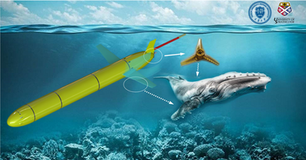
Biomimetic improvement for the hydrodynamic performance of the enduring underwater glider
Even with thousands of years’ exploration, we still know little about our mother ocean. Till now, continuous monitoring in the ocean is always paramount. In the last 20 years, a type of autonomous underwater vehicle (AUV), underwater glider(UG), has shed light on the enduring monitoring. It uses small buoyancy change to
move up and down gliding through the ocean. However, most of the off-the-shelf UGs are still relying on their
onboard battery power which limits either its endurance (6-24 months) or payload capacity or travelling speed (1-2 knot). The hydrodynamic design of UGs is still far from optimum as the design is mainly based on the legacy torpedo shape with rectangle wings.
Through this project, the consortium is seeking for a biomimetic solution to improve the hydrodynamic design of UGs. The research is going to be conducted by numerical and experimental investigations jointly in both institutions with primary focuses on hull surface resistance reduction and wing performance enhancement.
Two bio-inspired concepts, bionic surface treatment and humpback whale tubercles, are going to apply onto a UG to evaluate the potential hydrodynamic performance enhancement. Advanced numerical simulation and
experimental validation are going to be conducted in this project. With the development of this project, the UG
can be optimized towards efficient gliding and be more resilient to the harsh marine environment so that to provide efficient and reliable services.
move up and down gliding through the ocean. However, most of the off-the-shelf UGs are still relying on their
onboard battery power which limits either its endurance (6-24 months) or payload capacity or travelling speed (1-2 knot). The hydrodynamic design of UGs is still far from optimum as the design is mainly based on the legacy torpedo shape with rectangle wings.
Through this project, the consortium is seeking for a biomimetic solution to improve the hydrodynamic design of UGs. The research is going to be conducted by numerical and experimental investigations jointly in both institutions with primary focuses on hull surface resistance reduction and wing performance enhancement.
Two bio-inspired concepts, bionic surface treatment and humpback whale tubercles, are going to apply onto a UG to evaluate the potential hydrodynamic performance enhancement. Advanced numerical simulation and
experimental validation are going to be conducted in this project. With the development of this project, the UG
can be optimized towards efficient gliding and be more resilient to the harsh marine environment so that to provide efficient and reliable services.

ELEMENT - Effective Lifetime Extension in the Marine Environment for Tidal Energy
This project is sponsored by EU-H2020 program supporting Nova Innovation. The ELEMENT team – a partnership of leading European academic, industrial and research organisations – will develop and validate a radically innovative tidal turbine control system, using the tidal turbine itself as a sensor, to deliver a step change improvement in the performance of the tidal energy sector.
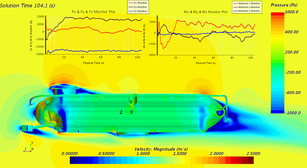
Dynamic Stability of JFD DSAR rescue submarine
This project is to support James Fisher and Defence Ltd. (JFD) to perform dynamic stability analysis using computational fluid dynamics software. The third generation Deep Search and Rescue (DSAR) vehicle is modelled with 6-degree of freedom in self-propulsion condition to assess its dynamic stability performance.
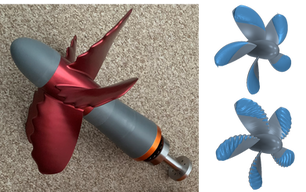
A Biomimetic Inspired Energy Saving Device on Marine Propeller
This project is sponsored by the Royal Society to explore the application of the biomimetic leading edge tubercle concept on marine propellers with a view to improving their performance and ultimately reducing ship fuel consumption. And we currently find the application of leading-edge tubercles can control the cavitation development (50% volume reduction) and mitigation the noise.
Acknowledgement to our funders




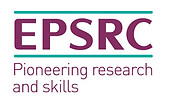


bottom of page